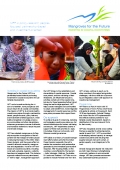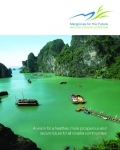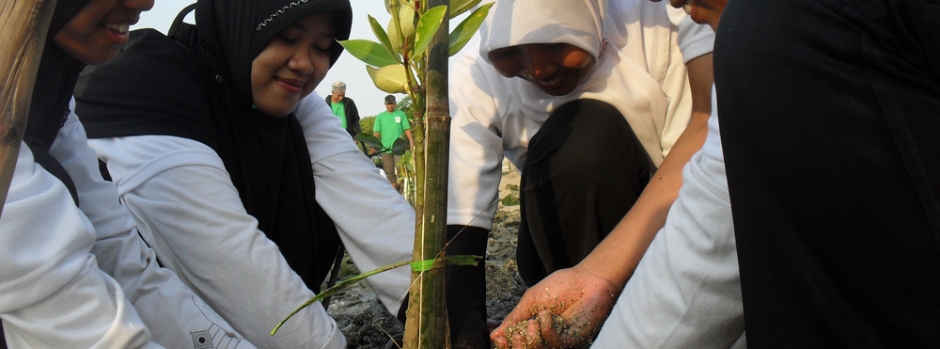Mangroves for the Future (MFF) is a unique partner-led initiative to promote investment in coastal ecosystem conservation for sustainable development. Co-chaired by IUCN and UNDP, MFF provides a platform for collaboration among the many different agencies, sectors and countries which are addressing challenges to coastal ecosystem and livelihood issues. The goal is to promote an integrated ocean-wide approach to coastal management and to building the resilience of ecosystem-dependent coastal communities. MFF builds on a history of coastal management interventions before and after the 2004 Indian Ocean tsunami. It initially focused on the countries that were worst affected by the tsunami -- India, Indonesia, Maldives, Seychelles, Sri Lanka and Thailand. More recently it has expanded to include Bangladesh, Cambodia, Myanmar, Pakistan and Viet Nam.
Mangroves are the flagship of the initiative, but MFF is inclusive of all types of coastal ecosystem, such as coral reefs, estuaries, lagoons, sandy beaches, seagrasses and wetlands.
The MFF grants facility offers small, medium and large grants to support initiatives that provide practical, hands-on demonstrations of effective coastal management in action. Each country manages its own MFF programme through a National Coordinating Body which includes representation from government, NGOs and the private sector. MFF addresses priorities for long-term sustainable coastal ecosystem management which include, among others: climate change adaptation and mitigation, disaster risk reduction, promotion of ecosystem health, development of sustainable livelihoods, and active engagement of the private sector in developing sustainable business practices. The emphasis is on generating knowledge, empowering local communities and advocating for policy solutions that will support best practice in integrated coastal management.
Moving forward, MFF will increasingly focus on building resilience of ecosystem-dependent coastal communities by promoting nature based solutions and by showcasing the climate change adaptation and mitigation benefits that can be achieved with healthy mangrove forests and other types of coastal vegetation.
“...Build back better...” —Bill Clinton, June 2005
|
The devastation caused by the Indian Ocean tsunami of December 2004 laid bare the vital link between coastal ecosystems and human livelihoods. It was United States President Bill Clinton’s vision that rebuilding in tsunami-hit areas should improve natural infrastructure and strengthen resilience against future natural disasters. In response to this vision, IUCN, International Union for Conservation of Nature, and the United Nations Development Programme (UNDP) developed Mangroves for the Future in 2006. Since then, MFF has grown to include eight institutional partners, plus a growing number of countries. At the launch of the Tsunami Legacy report* at the United Nations in New York in April 2009, Bill Clinton acclaimed MFF as one of the most positive and forward-looking developments of the post-tsunami period. |
*The Tsunami Legacy: Innovation, Breakthroughs and Change, Tsunami Global Lessons Learned Project, 2009.
Please click on this presentation to view how MFF has evolved from 2004.
Related Documents

2011 MFF Factsheet
Author: MFF
Publisher: IUCN
Posted on: 24th Feb 2014
Category: Asia Region (Secretariat)
Size: 764 KB

Mangroves for the Future programme brochure
A vision for a healthier, more prosperous and secure future for all coastal communities
Author: MFF
Publisher: IUCN
Posted on: 17th Sep 2015
Category: Asia Region (Secretariat)
Size: 2.6 MB
